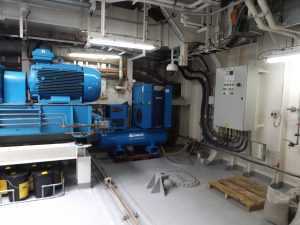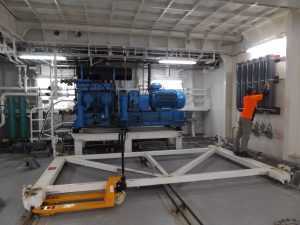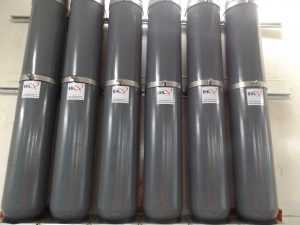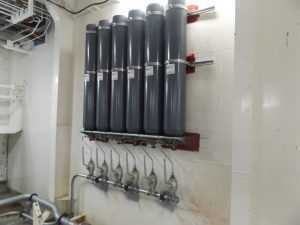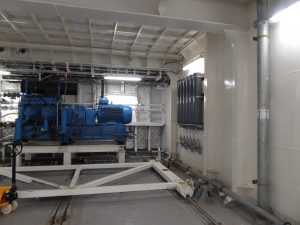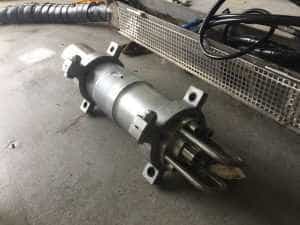Injected Air Gun Maritime Seismic System
Seismic Survey – Generated Injection Air Gun
EHL Group’s Australian team have installed a HP Air storage system on the CSIRO Investigator Research vessel to supply the Seismic Air Guns for underwater surveys as part of the current layover briefs. The cylinders are fed with boosted compressed air and stored at 270barg. The project involved running new high pressure lines, mounting inverted cylinders on the bulkhead with individual valving for each cylinder. This hold is space critical due to the hatch above being opened to then store containers on the movable sled below.The lines then feed through to the air gun array feeds.
An air gun is used for marine reflection and refraction surveys. It consists of one or more pneumatic chambers that are pressurized with compressed air at pressures from 14 to 21 MPa (2,000 to 3,000 psi). Air guns are submerged below the water surface, and towed behind the ship. When an air gun is fired, a solenoid is triggered, which releases air into a fire chamber which in turn causes a piston to move, thereby allowing the air to escape the main chamber and producing a pulse of acoustic energy. Air gun arrays may consist of up to 48 individual air guns with different size chambers, fired in concert, the aim being to create the optimum initial shock wave followed by the minimum reverberation of the air bubble(s).
Air guns are made from the highest grades of corrosion resistant stainless steel. Large chambers (i.e., greater than 1.15 L or 70 cu in) tend to give low frequency signals, and the small chambers (less than 70 cubic inches) give higher frequency signals.
This video taken by Roberto Romero of the air guns on the OGS Explora demonstrate how the systems are utilised in seismic mapping..
For further information contact EHL Group
solutions@ehlsolutions.nz.w3pcloud.com
